AToN Center Clinical Director, Licensed Clinical Psychologist
Cassandra Cannon, Ph.D. – PSY24315
Acknowledgements
This curriculum assessment project was developed with consultation with Marie Dumas, Psy.D, who was the Program Director at the AToN Center from 2011-2013. Terra Fuhr, Ph.D. and Megan Lewis, Psy.D. assisted in data collection for several months. Their assistance in this project is greatly appreciated.
Introduction
AToN Center is a small residential treatment program for substance misuse disorders. This program offers daily group therapy and individual therapy with group sizes no larger than seven. Specifically, each resident attends three groups each day: Recovery Study, Psychology Group and Process Group. The clinical team creates an individualized approach for each resident and focuses on building skills that will enhance recovery. The curriculum at the AToN Center is Relapse Prevention and Cognitive Behavioral Therapy. As AToN center offers daily individual therapy, this allows each resident to focus on increasing skill development as well as develop insight into the underlying issues related to their substance misuse.
As the staff and clinical team at the AToN Center prides themselves in providing excellent care, the AToN Center assessed residents to evaluate the curriculum and treatment that AToN Center provides as a whole.
A Review of Measures
This inventory is a measure of eight different types of coping responses to stressors. Each of these eight types of coping responses are assessed by responses to six items per scale. It has been deemed suitable for administration to healthy adults, psychiatric patients and those with a diagnosis of a substance use disorder.
According to Moos (1993), the Coping Responses Inventory has moderately stable internal and test re-test reliability. This author also reviews a number of research studies that generally support the construct, concurrent and predictive validity of the CRI scales. The scale was normed on adults, some of whom had drinking problems. The population was largely Caucasian, married, and moderately well educated, with average to above average socioeconomic status. As AToN Center’s population mimics the population the scale was normed upon, there is less concern regarding threats to external validity.
The assessment asks the respondent to think about the most important problem or stressful situation they have experienced in the last 12 months. They are then asked to respond by utilizing a likert scale comprised of “Not at all,” “Once or Twice,” “Sometimes,” and “Fairly Often.”
Example: Did you think of different ways to deal with the problem?
The Coping Responses Inventory separates coping styles into four broad domains. The most favorable domain is the “approach coping” domain. This domain is problem focused and reflects cognitive and behavioral efforts to resolve the stressor. It is comprised of four types of responses; two of which are considered “cognitive” responses and two of which are considered to be “behavioral” responses.
Logical Analysis: Cognitive attempts to understand and prepare mentally for a stressor and its consequences.
Example: Did you try to find some personal meaning in the situation?
Positive Reappraisal: Cognitive attempts to construe and restructure a problem in a positive way while still accepting the reality of a situation.
Example: Did you tell yourself things to make yourself feel better?
Seeking Guidance and Support: Behavioral attempts to seek information, guidance or support.
Example: Did you talk with a friend about the problem?
Problem Solving: Behavioral attempts to take action to deal directly with the problem.
Example: Did you try at least two different ways to solve the problem?
The “avoidance” coping domain is more emotion focused and reflects cognitive and behavioral attempts to avoid thinking about a stressor and its implications. The individual also fails to manage the affect associated with it. It is also comprised of four types of responses; two of which are considered “cognitive” responses and two of which are considered to be “behavioral” responses.
Cognitive Avoidance: Attempts to avoid thinking realistically about a problem.
Example: Did you try to forget the whole thing?
Acceptance or Resignation: Cognitive attempts to react to the problem by accepting it.
Example: Did you lose hope that things will ever be the same?
Seeking Alternative Rewards: Behavioral attempts to get involved in substitute activities and create new sources of satisfaction.
Example: Did you turn to work or other activities to help you manage things?
Emotional Discharge: Behavioral attempts to reduce tension by expressing negative feelings.
Example: Did you take it out on other people when you felt angry or depressed?


